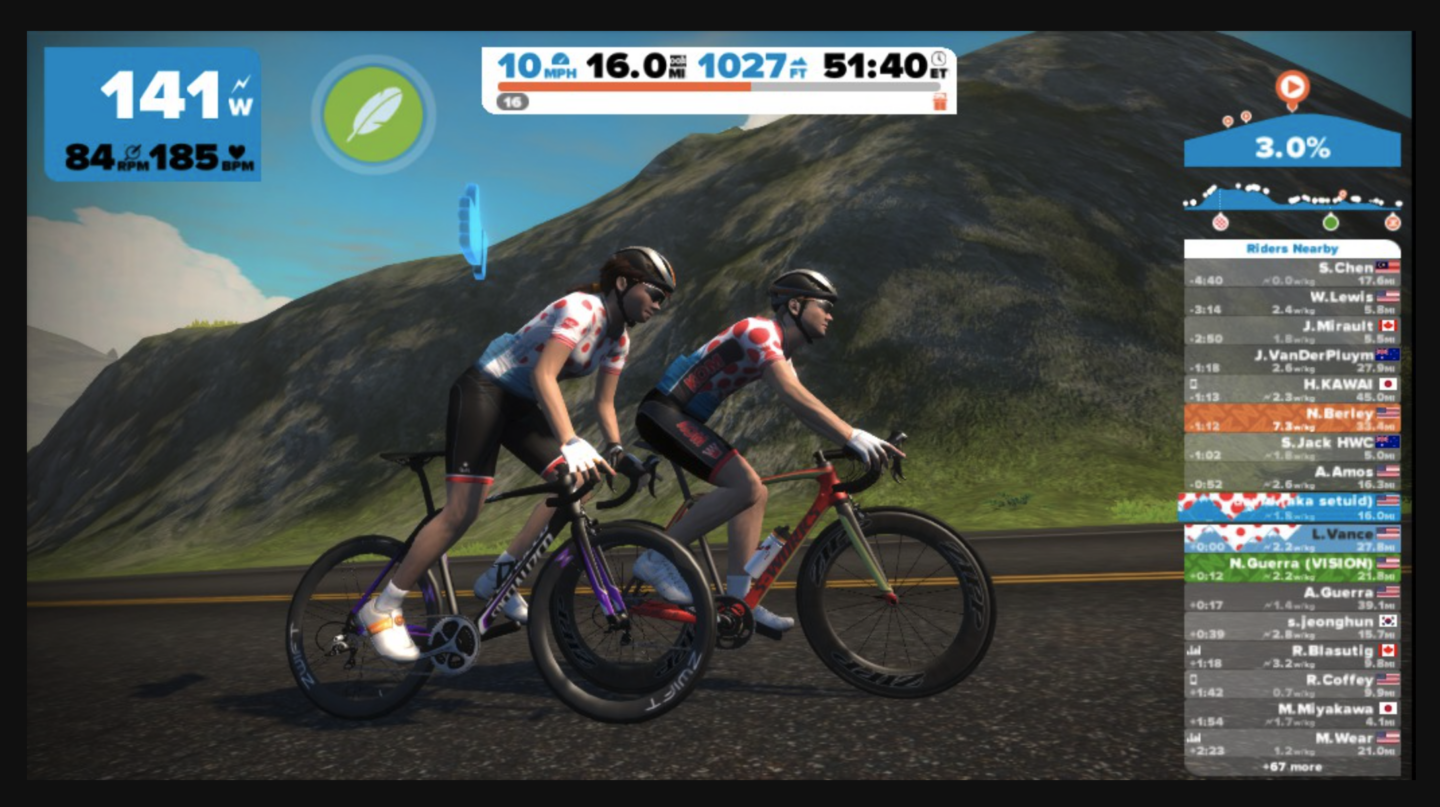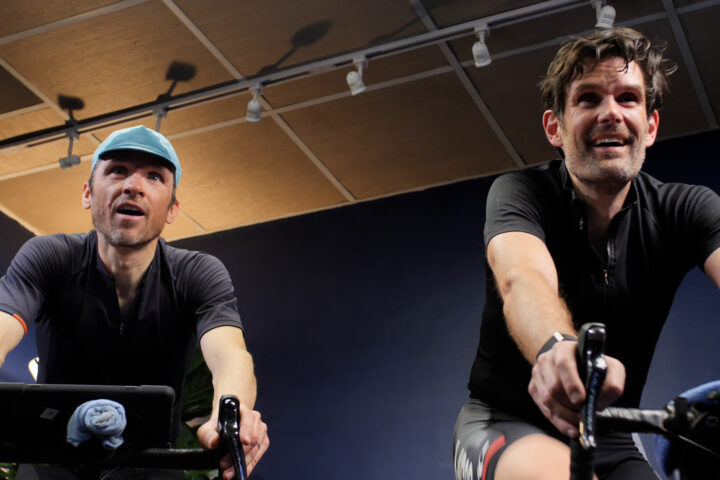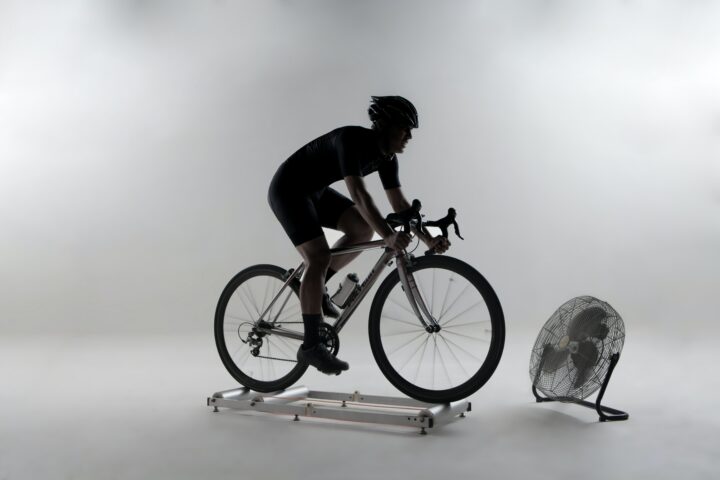If you train with Zwift, you probably understand how easy it is to get carried away and turn every session into an all-out race. (You might even be thinking, “Yeah, that’s the point!”) And if you have some discipline, you also know how effective your workouts can be on the virtual cycling platform. Training with Zwift can be a great way to follow your training plan, if you hop on the trainer with the right approach.
There are many ways to use Zwift—from sheer competition to a source of motivation, and many things in between. But despite the platform’s constant progress toward making their virtual world more akin to the physical world, there are many aspects that make it a unique experience.
By understanding these nuances, defining your goals, and tailoring your strategy, Zwift success is only a few pedal strokes away—whether you’re looking to race, train, or simply test your fitness.
Zwift is not a level playing field
The most significant nuance to keep in mind is that every rider is facing different conditions. Some riders are in advantageous environments—climate-controlled with the latest fan technology. They may have peaked for the event and timed their caffeine intake perfectly.
On the other hand, you might be at watt-robbing altitude, in a garage nestled between the workbench and the grass fertilizer. Cooling fans? Forget those—your toddler filled them with dog food.
Your trainer may or may not be “smart” (never mind calibrated), and we can all agree that in real life the rider that passed you on the climb doesn’t really weigh 65 kilograms.
But, none of that matters.
You are in this for yourself, regardless of your (or your competition’s) situation. The altitude? You deal with it every day. Those other riders? They’re there to help you achieve your goals.
And defining those goals is the best first step to having a successful Zwift session. Just as determining the purpose of any workout session is integral to proper training, knowing why you’re Zwifting not only helps frame success, it also helps set your tactics to achieve it.
Below we define three possible goals for using Zwift: fitness test, training workout, or race. Then we offer our recommendations for getting the most from each type of session.
How to do a fitness test on Zwift
One of the best ways to use Zwift is to test your current fitness. Of course, there are caveats about whether a virtual performance translates to an outdoor performance—and this is further complicated by differences in equipment and the variability of trainer calibrations.
However, it is a common sentiment that racing (Zwift included) unlocks a competitive channel that allows riders to push themselves further than even the most arduous workouts or testing sessions.
Let’s look at an example scenario for testing an element of fitness on Zwift.
The Goal: Maximal Average Power (MAP) Test
- Prepare for the session
- Choose a course that is conducive to a steady effort.
- While individual time trials immediately spring to mind, I prefer the more direct competition of a road race. The Innsbruck Worlds course is perfect for this as multiple routes head directly to the infamous Innsbruck KOM climbs after a short roll-out on flat ground. These climbs are steady and great for a long, hard effort. Additionally, with the tangible finish atop the climb, you’ll be primed to empty the tank during your effort.
- Know the approximate length of the race
- Pre-determine a target workload that you are likely to be able to maintain
- Use the competition to get the most from yourself
- Remember that you’re competing against yourself
- Avoid instigating or covering attacks if the extra effort means you’ll need to balance it with recovery.
- Focus on riders up the road to motivate yourself to maintain power without taking recovery.
- Use the closing moments of the race to use up any reserves.
How to do a training workout on Zwift
Signing up for a Zwift race can both cement a time to train during a busy day and act as a catalyst to achieve your best performance.
For this goal, the Zwift peloton is not a foe to be conquered. View it as a tool to motivate you to a successful workout. There’s no need for start-line jitters or the fastest frame and wheel combination.
The Goal: Maximum Time at Specific Workloads
- Prepare for the session
- Define your anticipated workout: effort length, repetitions, workload, recovery length
- Choose courses or races that pair well:
- Long efforts: Courses with longer climbs or flatter courses where you can drive the pace and then recover in the pack. For these types of efforts I prefer the tried-and-true Watopia world. Courses such as Tempus Fugit, Tick Tock, or even the Ocean Lava Cliffside route allow you to dictate the pace, and they lack surges because they have relatively few “punchy” efforts.
- Shorter efforts: Criteriums, especially those with hills, naturally surge. Augment these surges with attacks as needed. A great course for this is the LaGuardia Loop. Since it is a rolling course, the pace is usually steady with multiple opportunities per lap to surge or attack.
- Make your efforts purposeful
- Drive the pace, take pulls, attack—but only at the workloads that you planned before the session.
- Use the motivation from the competition to keep your workload appropriately high as fatigue begins to set in.
- Commit to recovery as planned—do not get caught up in the heat of the moment.
How to race and win on Zwift
Sometimes you just want to win. For some, it’s the group sprint, and for others it’s a pro contract. At any time, you can log on to Zwift and choose from multiple events.
The race may be in your living room, but as the timer counts down to the start, the butterflies are real. Welcome to the world of virtual racing—where the anxiety of pinning your race number at the last minute is replaced with technical snafus as you scramble to get ready.
The Goal: (Virtual) World domination
- Prepare for the session
- Choose a course that plays to your strengths
- Warm up appropriately, as the start is likely to cause a split.
- Join the race early enough to be positioned toward the front of the scrum, but keep riding to continue your warm-up (even though it won’t show up in your race-file).
- Research competitors on Zwiftpower.com to gauge their strength.
- Choose bike and wheel combinations that address your limitations:
- If you’re a small rider who needs help on the flats, select more aerodynamic bikes and wheels even if the course has some climbing.
- If you’re a larger rider who needs to get over a leg-breaking hill with the group, choose a climbing set-up even if most of the course is flat.
- Conserve energy while keeping yourself in contact with your peers
- Expend energy only where needed, such as the start or surges that will split the field.
- Use “power-ups” smartly (if applicable)
- Discard/use immediately those which do not address your limitation(s)
- Hold onto effective “power-ups” until the decisive moment:
- Cloaking (ghost icon): Use to create a gap by attacking unseen
- Drafting (van icon): Use to accelerate through the group in the final sprint
- Burrito: Use to prevent others from drafting during sprints/attacks
- Reduced weight (feather icon): Use to attack on climbs
- Aero boost (helmet icon): Use to gain a short advantage once you’re off the front of the group, either during an attack or during the sprint finish.
- Hide in a stronger group
- In Zwift, multiple categories of riders often start together. This allows riders of lower categories to escape with a “stronger” group. Sometimes the rest of the group doesn’t know a rider is up the road; other times there’s nothing they can do to close the gap.
- In this instance, you’re looking to extend your time in the group as much as possible to maximize the gap to your group before you get dropped (assuming you do).
- Unleash the energy you’ve been conserving in the correct moment to take the win:
- Sprinter or not, now is your time to shine.
- If you have high peak power but poor anaerobic capacity: Be patient, let others go first, follow their draft, and surge for the win.
- If you have lower peak power but good capacity: Use the element of surprise. Riders expect someone to jump, so attack at a time they aren’t suspecting and go all-in to prevent someone from closing the gap. You’ll be losing power as you near the line, but if you play it correctly you’ll still cross first.
Zwift skills
Many learned skills can help your performance on Zwift. The following skills will be discussed in a future article:
- “Even out the effort”
- “Know your limits”
- “Outsmart your weaknesses”
- “Moving in the game / heads-up riding”
- “Warming up for Zwift”
With clearly defined goals and the right strategies to achieve them—along with specific skills which we’ll explore in an upcoming article—you’re well on your way to moving up in the Zwift world.
The pro contract, however, may remain elusive.






